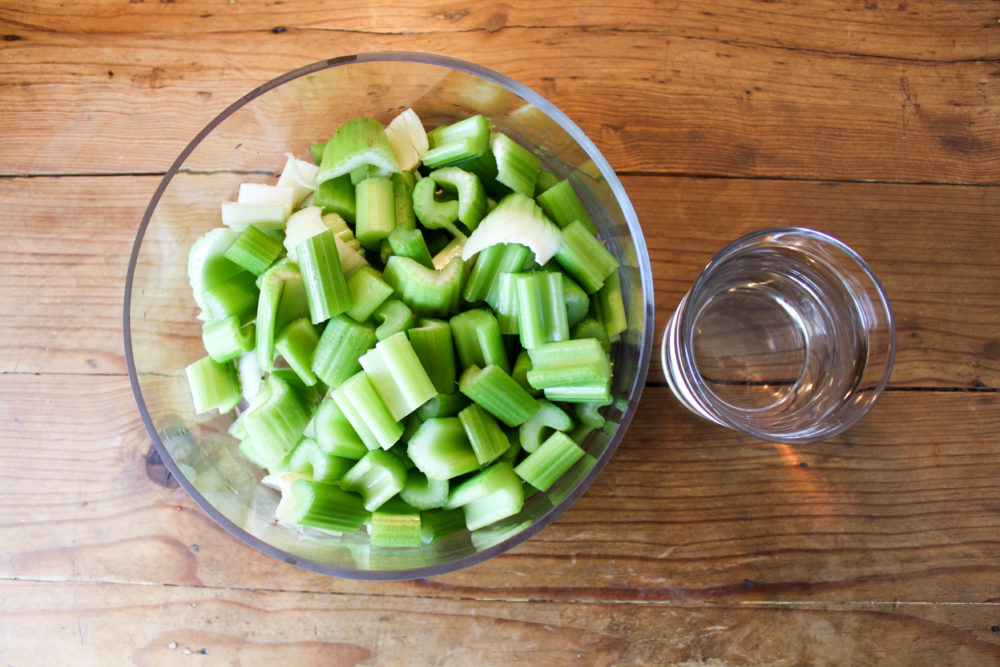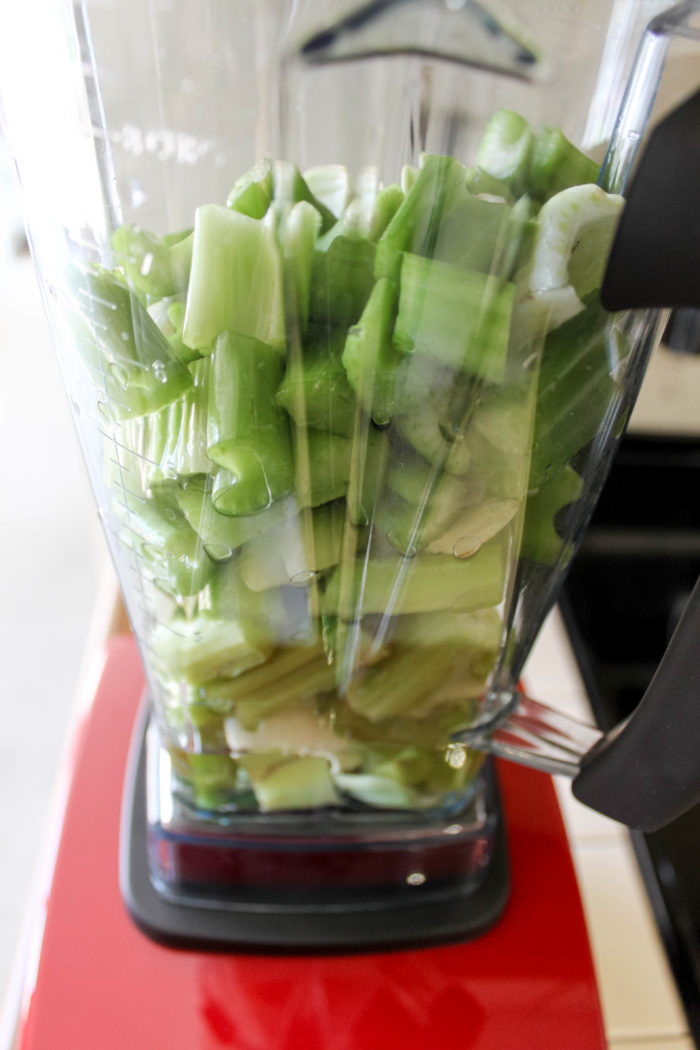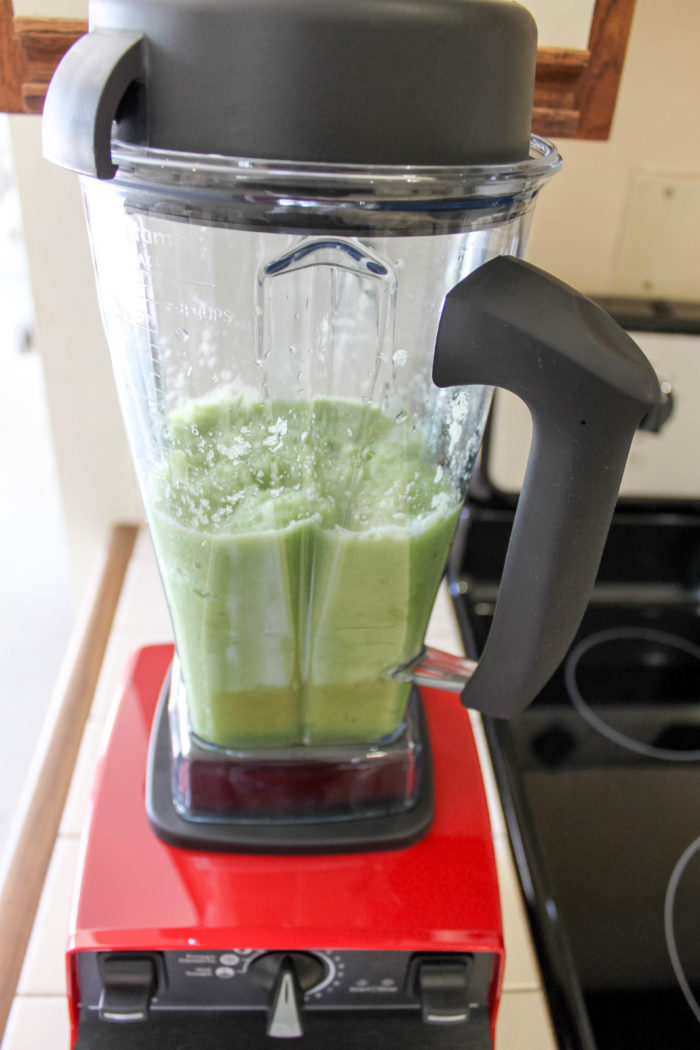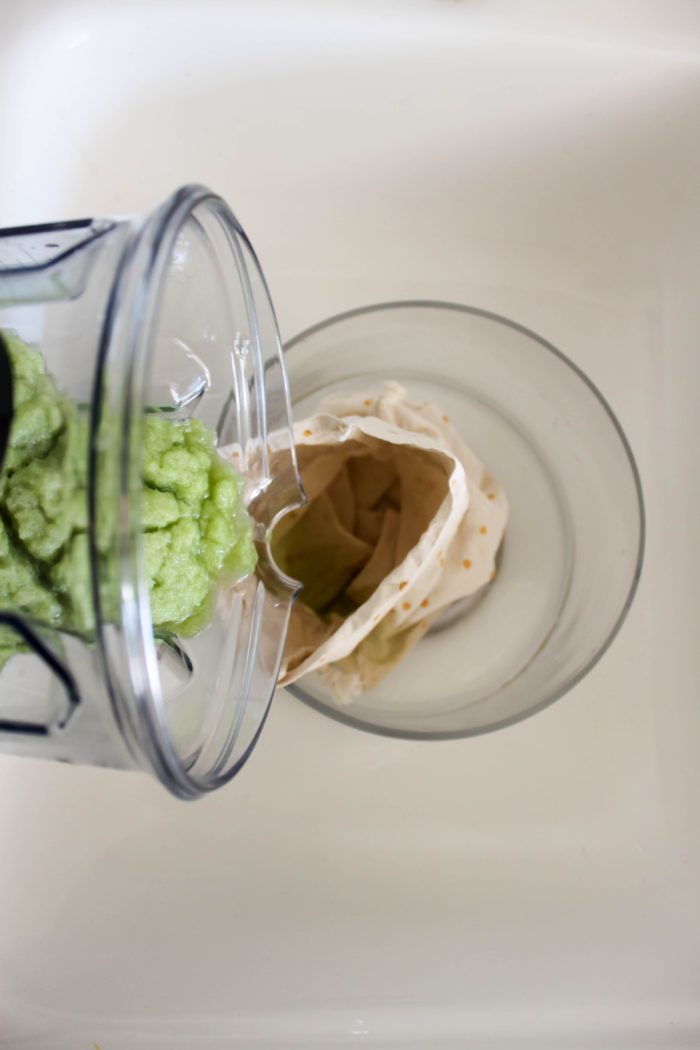Ok, so it’s not exactly news that green vegetables are incredibly beneficial to your health and well-being. Today, I want to give a little love to celery—a vegetable that can at times be overlooked and consumed minimally in comparison to other green veggies. Celery really deserves to have superfood status due to its vitamins, minerals, nutrients, and other health promoting benefits. As a vegetable with a high flavonoid content, celery fights cancer and cardiovascular diseases, rheumatoid arthritis, gird, chronic fatigue syndrome, migraines, IBS, autoimmune disease, vertigo, psoriasis, eczema, fibromyalgia, and liver disease.

For me personally, celery juice has been incredibly surprising in helping with my digestion and bloating issues. Because celery has been a part of my diet for some time in whole form, I did not think that drinking celery juice would affect me any differently. However, I could not believe that even after the first time of drinking a couple of glasses my digestion was so much better, and I wasn’t as bloated throughout the day.
Although I was aware of celery’s many benefits, I put off making celery juice for quite a while because I thought that it was too much hassle, but once I did it for the first time and realized how easy it was, I have been making it every day, sometimes more than once per day. I hope that you will give this simple juice a try in your daily routine to reap its mighty benefits.
Great for Gut Health
Due to its unique non-starch polysaccharides that are made from pectin rather than simple sugars, which have numerous anti-inflammatory benefits for the whole digestive system. Celery’s high insoluble fiber and water content creates a perfect cleaning tool in the intestines. Insoluble fiber is vital for regularity and consistency. This combination of cleaning and cleansing of the intestines is a strong preventative of colon cancer, irritable bowl syndrome, diarrhea and constipation. When eaten whole the fibrous stems add bulk making for easy elimination.
Sugar Craving and Weight Loss Aid
Celery is a low-glycemic food that balances your blood sugar levels due to its high mineral and vitamin C content that curbs sugar cravings. It is, of course, a low-calorie food, even though research shows that a cup of celery has sixteen calories, to digest that it actually takes fourteen calories, so the myth that it takes your body more calories to digest it is not exactly correct, but it does burn 86% of the calories in the celery, not that it’s a huge deal to begin with, but the extra volume can help with feelings of satiety after a meal while contributing minimal calories.
Beats Bloating
The unique sodium-to-potassium levels in celery make it one of the most powerful diuretics for the body without dehydrating it. It reduces gas as it soothes and relaxes the nerves in the intestinal walls. The natural sodium content also raises stomach acid, creating better digestion. (For best results, drink celery juice first thing in the morning.)
Creates Clarity and Balance in the Mind
Dubbed as “The Second Brain” by Michael Gershon who discovered that the human bowel (including the stomach, esophagus, small intestine, and colon) is comprised of approximately one hundred million functioning neurons. There is a direct correlation between your gut health your state of mind. It’s no wonder that we are told to trust our gut feeling. Thanks to celery’s digestive benefits, consuming it supports the workings of “the second brain.”
Electrolyte Drink Replacement
Celery juice serves as a perfect natural electrolyte drink replacement due to its sodium and potassium balance, which is important to the heart’s electrical activity, the breakdown of carbohydrates, and the building of muscle. Its high calcium content also helps to build strong bones and plays an important role in the dilation of blood vessels. The vitamin K content in celery controls blood thickness and flow, therefore helping with recovery from working out and healing of injuries.
How to Make Celery Juice
For many people, spending $6-10 on a cold-pressed celery juice from an organic juice bar is out of reach financially. Plus, unless you bring your own reusable container like a Mason jar, that juice that is so healthy for your body wreaks havoc on the health of the planet. For these reasons, I highly recommend making your own juice at home. Fortunately, you don’t need a costly juicer to reap the benefits of celery juice every day. Try this simple recipe with the equipment you already have at home.
Juicer-Free Celery Juice Recipe
For this celery juice recipe, you will need a high-speed blender. I have tried it with a regular blender and the celery just would not blend. When selecting celery, try to buy organic, because it’s on the dirty dozen list and can cause a minor allergic reaction in some people, myself included. Hope you enjoy this celery juice recipe!
Yield: 3 Glasses
Time: 5 min
Ingredients:
3 cups celery
½ – 1 cup water
Tools:
High-Speed Blender
Nut Milk Bag or Strainer
Bowl
Directions:

1. Cut up the amount of celery depending on how much juice you want to make. One cup will make approximately one glass of juice.


2. Blend on high until the whole mixture is entirely blended.


3. Put a bowl in the sink and pour the mixture into a nut milk bag. Wring out the bag into the bowl. If you don’t want to throw away the pulp, you can always add it to smoothies, soups, or dips—or make celery salt in a dehydrator .
4. If using a strainer, put the strainer over the bowl and pour the mixture into the strainer. The trick is not to stir or mix the juice and pulp mixture while it’s in the strainer to prevent the pulp going into the juice. Leave it to do it’s thing for a few minutes and voila.

The juice can also be refrigerated in jars for convenience but is best consumed within 24 hours.
Have you tried this simple celery juice recipe?
Also by Anna: My Intermittent Fasting Results Blew Me Away—5 Ways It Changed My Life
Related: How To Make the Best Low Sugar Green Juice Recipe
5 Creative Uses for Juice Pulp
Get more like this—Subscribe to our daily inspirational newsletter for exclusive content!
This article was first published on September 14, 2017 and most recently updated on September 28, 2019.
__
Photo: Anna Redko




